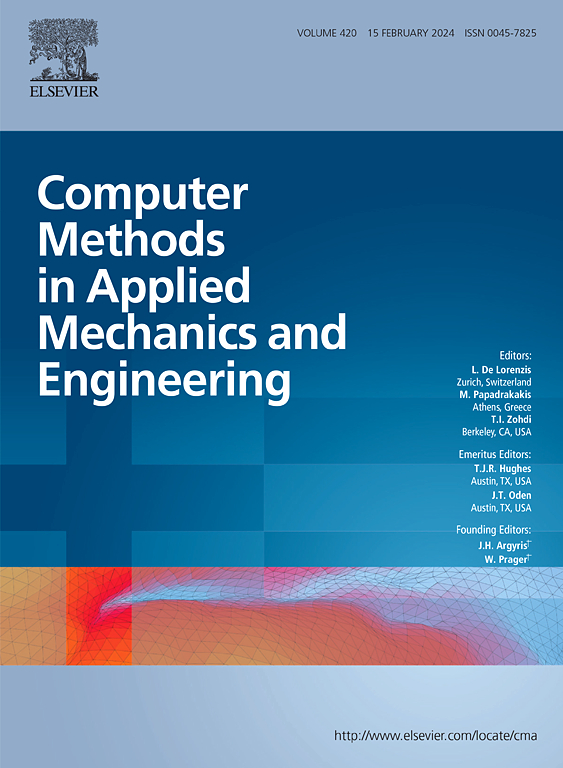Development of an efficient shock sensor for high-order multi-species compressible flow solvers on unstructured grids
IF 6.9
1区 工程技术
Q1 ENGINEERING, MULTIDISCIPLINARY
Computer Methods in Applied Mechanics and Engineering
Pub Date : 2025-02-11
DOI:10.1016/j.cma.2025.117816
引用次数: 0
Abstract
Many fluid flows of engineering interest involve high-density ratios, the formation of shock waves, and the presence of multiple chemical species. In these situations, obtaining accurate results depends on the computational fluid dynamics (CFD) algorithm’s ability to ensure stable and robust time and space discretization of the governing equations, effectively minimizing numerical diffusion.
In this work, we develop and evaluate a low-dissipation, high-order solver for the Navier–Stokes equations applicable to compressible, multi-species flows within the OpenFOAM library. We introduce a new shock sensor specifically designed for high-order discretization methods, which guarantees accuracy up to the fourth order in both space and time when using unstructured grids. Additionally, this approach is compatible with real-gas equations of state.
We evaluated the solver performances on three test cases, each chosen for its relevance to real-world engineering problems: a 1D multi-specie shock tube, a 2D shock tube where Richtmyer–Meshkov instability develops as a consequence of bubble-shock interaction, and, finally, the flow through the complex 3D geometry of a high-pressure fuel injector used in propulsion applications, to investigate its performances on unstructured grids. The results confirm the effectiveness of the proposed sensor in scenarios characterized by field discontinuities, shock waves, high-density ratio, and distorted grids. This means that our solver can accurately simulate complex fluid flows in engineering applications where these conditions are often encountered.
The developed high-order scheme and shock sensor were implemented in an OpenFoam solver called rhoCubic4kFoam.
求助全文
约1分钟内获得全文
求助全文
来源期刊
CiteScore
12.70
自引率
15.30%
发文量
719
审稿时长
44 days
期刊介绍:
Computer Methods in Applied Mechanics and Engineering stands as a cornerstone in the realm of computational science and engineering. With a history spanning over five decades, the journal has been a key platform for disseminating papers on advanced mathematical modeling and numerical solutions. Interdisciplinary in nature, these contributions encompass mechanics, mathematics, computer science, and various scientific disciplines. The journal welcomes a broad range of computational methods addressing the simulation, analysis, and design of complex physical problems, making it a vital resource for researchers in the field.

 求助内容:
求助内容: 应助结果提醒方式:
应助结果提醒方式:


